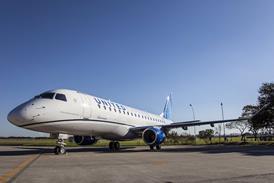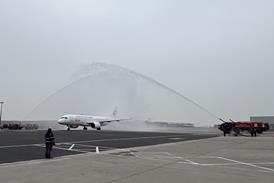Publication of the European Aviation Safety Agency's vision for overseeing airport and air traffic management (ATM) safety is imminent, says executive director Patrick Goudou.
This glance into the future - intended partly as the first stage in a consultation process - will take place just as the programme for extending the agency's existing areas of competence beyond certification and continuing airworthiness into operations is being implemented.
Speaking at the UK Royal Aeronautical Society (RAeS) on 27 September, Goudou and four of his top management team briefly outlined the agency's current status and near-term plans.
Then they faced a 2h grilling from the capacity audience of industry executives and interest groups intent upon understanding better how the much-criticised four-year-old agency thinks and operates.
By the end of October, said Goudou, the agency will make public its vision for how the regulation of airport and ATM safety will be legally centralised for the first time, which will not happen until EASA is eventually accorded rulemaking competence over those industry sectors. But he did not outline what the proposals would contain.
Also by the end of the month, he said, EASA's rulemaking programme will be ready for scrutiny by the European Parliament.
It will contain objectives that include the embodiment into EU law of the remaining Joint Aviation Regulations (JAR), preparation for handling the imminent extension of EASA's responsibility into operations regulation, proposals for further harmonisation with the US Federal Aviation Administration, and the adaptation of rules on general aviation.
By far the most vocal of the industry sectors represented at the RAeS seminar was the general aviation community, to whom Goudou revealed plans for a considerable simplification of the existing JARs on private pilot training and licensing.
Deputy head of the flight standards department Eric Sivel said that by March 2008 EASA will publish a notice of proposed amendment outlining plans for what he called a "light aircraft licence", aimed at those for whom a private pilot's licence is their final objective, not a stepping stone to further qualifications or a commercial licence.
He also revealed the proposal that the JAR requirement for instructors to qualify to commercial pilot licence level would be dropped for those who train student pilots for the light aircraft licence.
A licensing issue that Goudou admits EASA is struggling with is how to frame effective legal regulations for the multi-crew pilot licence (MPL). The problem, he says, is that the MPL specifies non-technical skills like crew resource management as well as technical skills, and since these are difficult to measure objectively the applicable regulation is difficult to frame.
There is also an International Civil Aviation Organisation requirement that MPL graduates shall be monitored for some years after the first of them enter airline service, and the EASA has to work out how that can be done.
Source: Flight International























